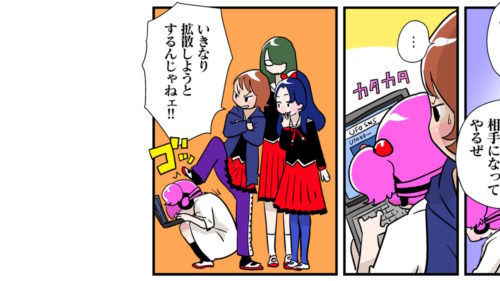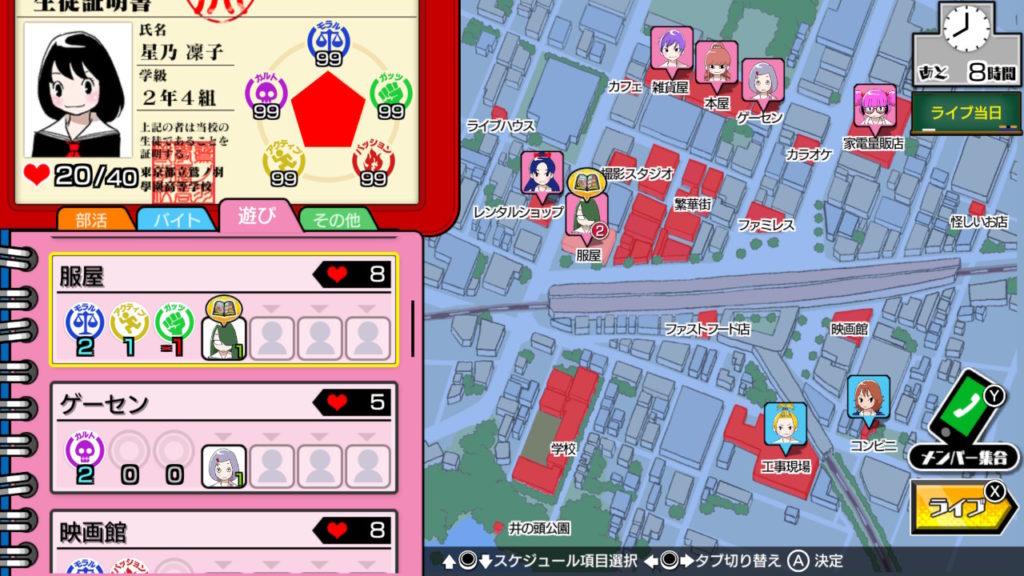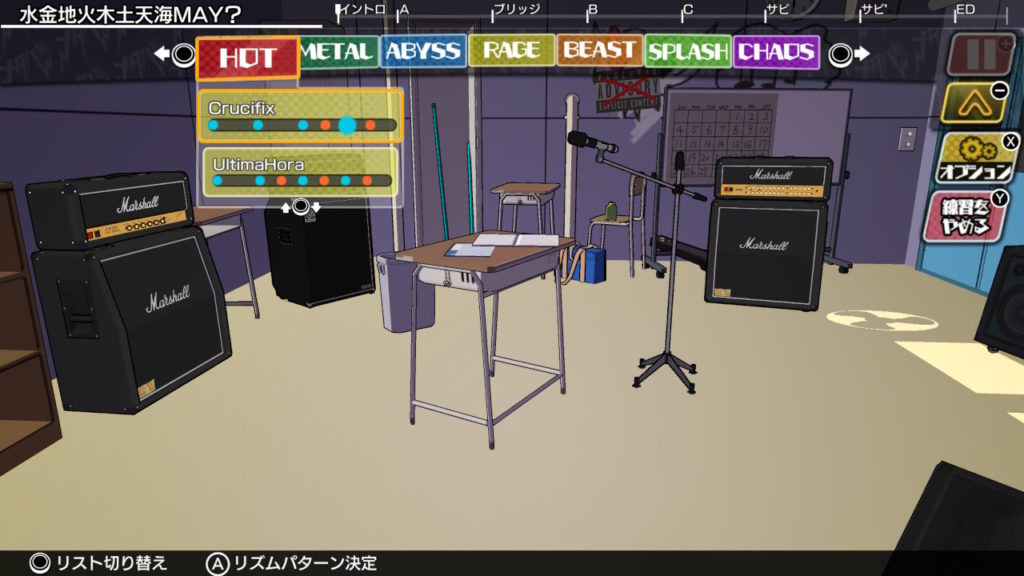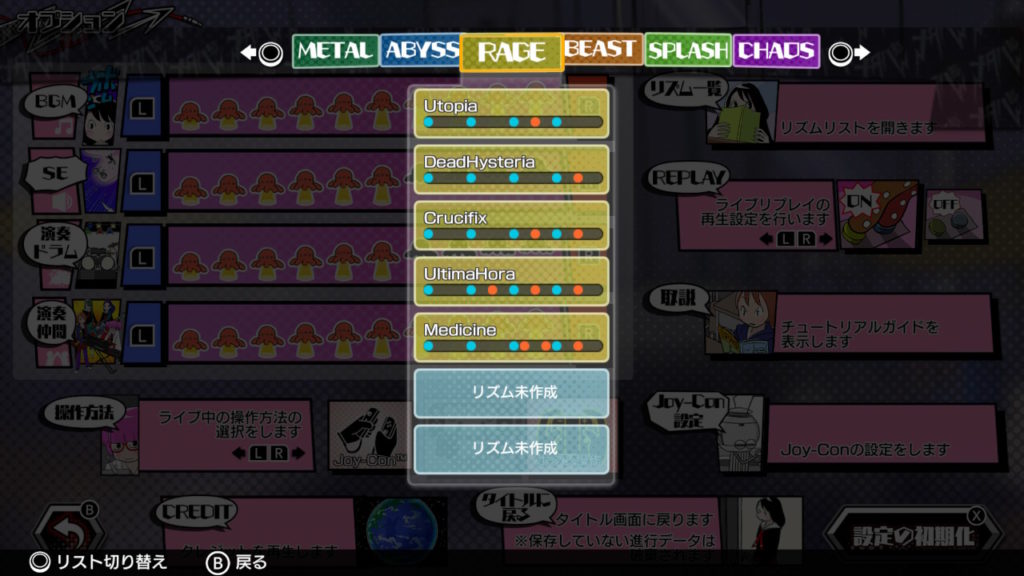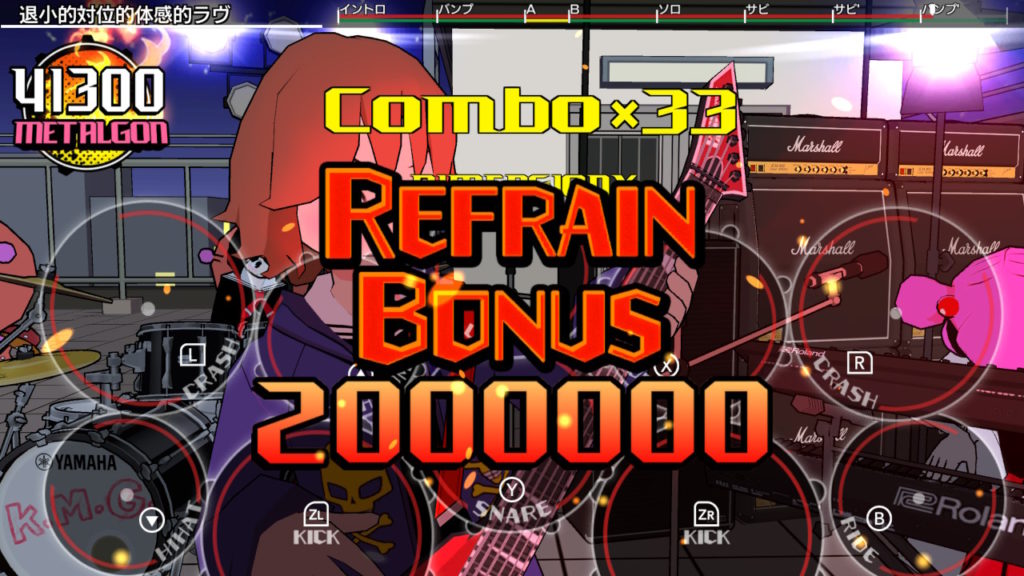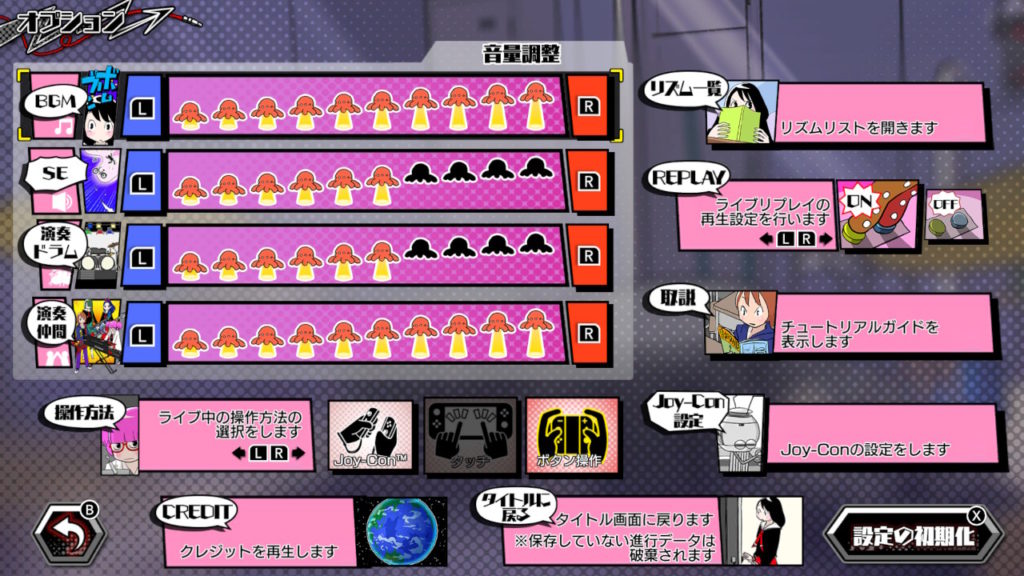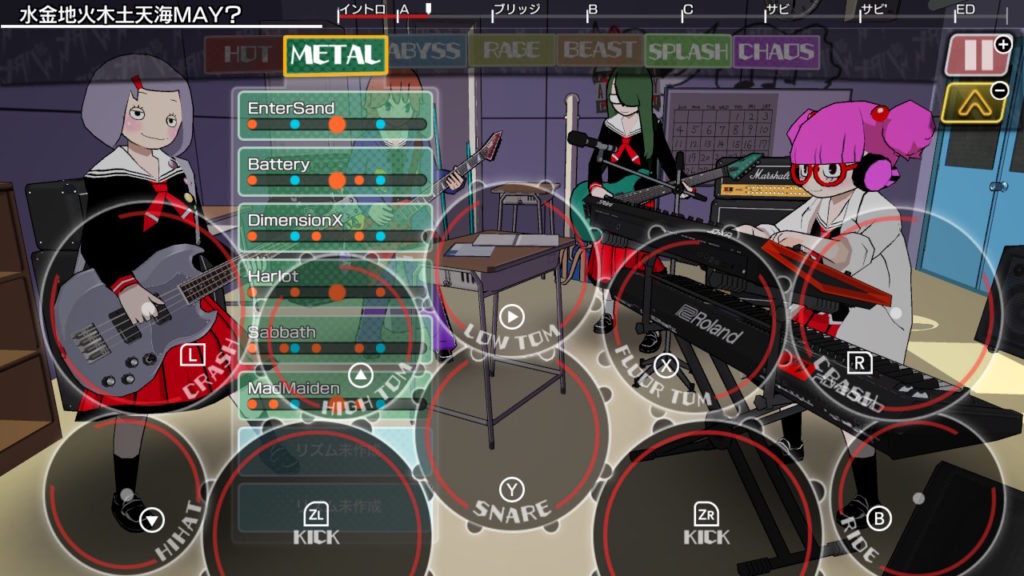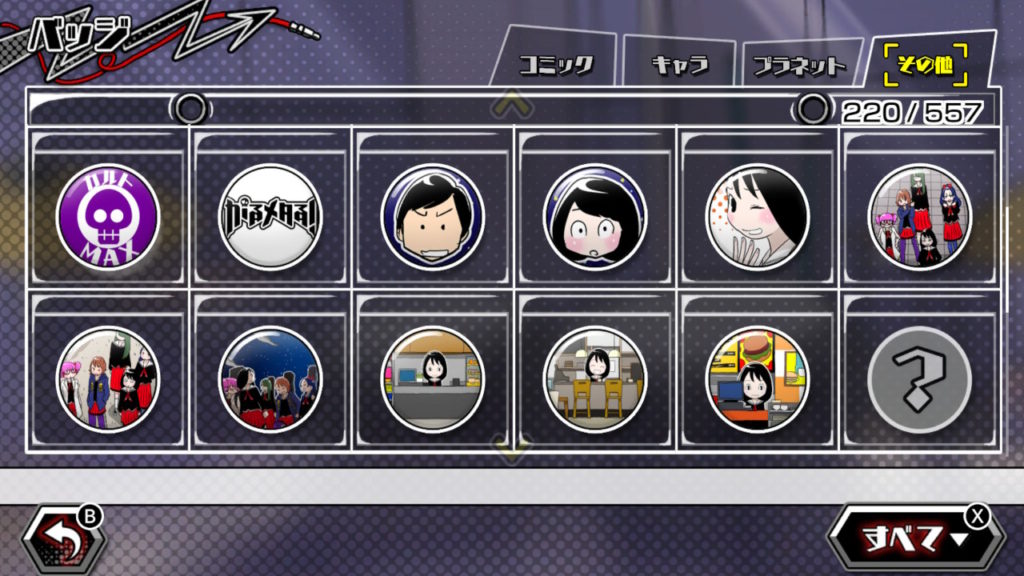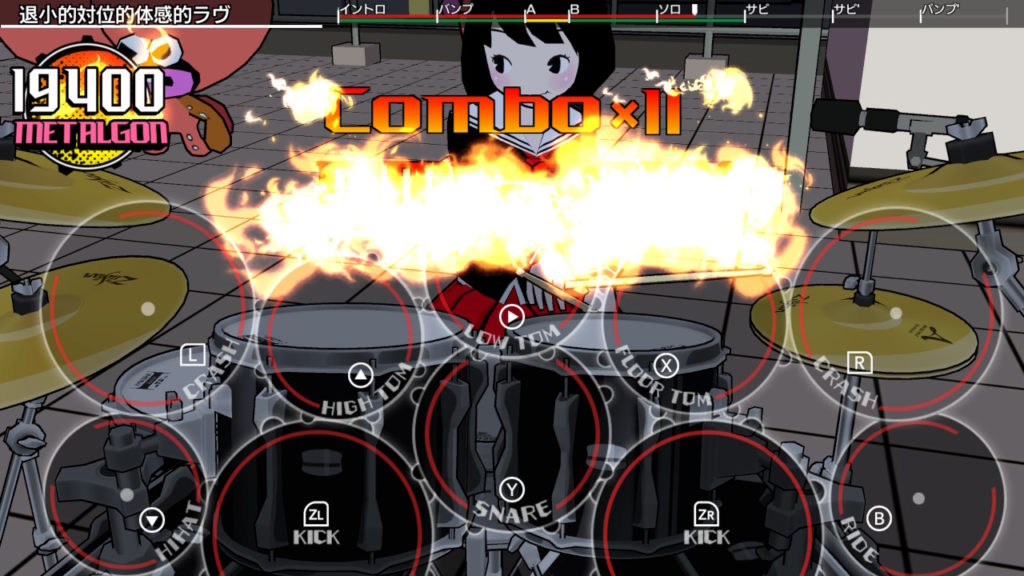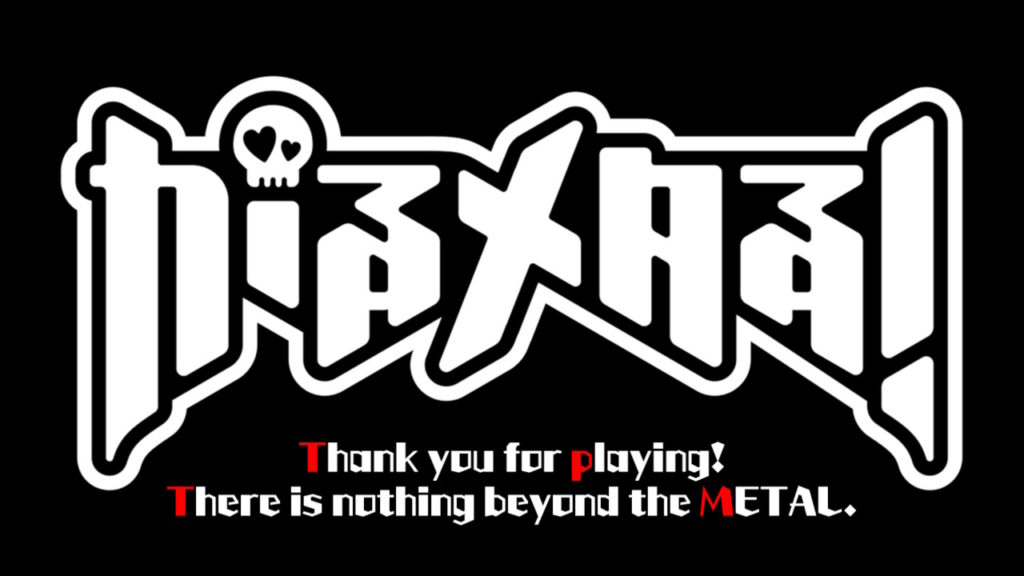
When I first saw Gal Metal announced back in September, I was immediately interested. Its simple manga-style art direction and campy sci-fi themes would have been enough to grab my attention, but the idea of a heavy metal rhythm game that has you playing the drummer in an all-girl garage band made it fully irresistible. I followed the news and trailers, pre-loaded it weeks before its release, and dove right in when it finally unlocked on launch day.
Since then, a little over a week now, I’ve been having an absolute blast with this game. I started looking around on the internet, as ya do, to see what other people were saying about it, and found… not much of anything. It’s a weird feeling to be having so much fun with a new game and find that nobody else is talking about it. I feel the need to do something about that.
Worse yet, the top Google result at the time of this writing is this terrible impression from TGS on Polygon, wherein the author effectively says, “I don’t immediately understand this game, which is in a language I don’t speak, and since I didn’t ask anyone present at the booth to explain it to me, I’m forced to just declare it a broken mess.” Which is shockingly unfair, and frankly, pretty goddamn irresponsible journalism. Shame on Polygon for allowing it to stand published like that, but that isn’t what I’m here to talk about. I’m here to talk about this game, from the perspective of someone who does understand it, and has fallen in love with it.
_____________________________________________________________________
Gal Metal is the latest from Tak Fujii;Â a drum-focused heavy metal rhythm game for the Nintendo Switch, released in Japan on February 8th, 2018. Unlike the piles of other franchises that typically come to mind when the genre is mentioned, Gal Metal has no notes raining from the top of the screen, no circles to aim for, no button icons to match up with. There is in fact almost nothing in the way of on-screen prompts or visual guides to follow along with as you play. So WTF? Well, by the time you finish reading this, you will know exactly WTF, and hopefully have a much better idea of whether this game is up your alley.
Rather than restrain you to some rigid bout of musical Simon Says, Gal Metal uniquely gives the player freedom to do just about anything they want for the entire duration of each song. It’s perhaps because of this freedom that the game can come off as confusing, intimidating, or maybe even pointless the first time you swing your Joycon drumsticks. (Or don’t swing them. We’ll get to that.)
The game’s story mode is presented in the form of semi-animated manga panels, like a motion comic. As such, there’s no VO to speak of, so this is the part where I must mention that my Japanese reading skills are, at best, comparable to those of a first grader. I can make out the gist of it just fine, so I have a rudimentary understanding of the plot, but I can’t comment on any finer details like its sense of humor in dialogue or how seriously it takes itself. Given the silly and lighthearted general vibe of the manga panels, I’m guessing not very. Gal Metal’s simple art style works beautifully for its purposes, and I found myself really getting attached to the characters and enjoying the story portions, despite not fully understanding 100% of their content.
You start off as a male high school student, who, on his way home one night, is abducted by aliens. Your body is fused with that of your female classmate, Rinko, who happens to play drums for an all-girl metal band, K.M.G. As far as I can decipher it, these octopus-like aliens are furious with the heavy metal being pumped through space by a Voyager probe that somehow ended up with the wrong music on it, and mean to invade Earth in retaliation. The only way to defeat them is by rocking out, repelling their advances with the power of metal. So it’s K.M.G. to the rescue, except that your no-drumming ass is stuck in Rinko’s body, so she’s gonna have to school you on how to rock. Don’t disappoint her.
She means business.
Each section of story then leads into a smartphone group chat conversation with your bandmates, wherein the upcoming gig and activities surrounding it are discussed. The party is then moved to a map and menu screen, where you can view your stats, see what your friends are up to, and decide how you want to spend your time before the next battle with the aliens. You have a limited supply of 40 stamina points for each in-game day, which can be spent in any of several ways. You can opt to brush up on your rhythm patterns, or rigorously practice the next song. You can see where your friends are hanging out on the map, and join them to boost your relationship with that bandmate and/or increase your skill points in a given attribute. Increasing things like your cult status, guts, passion and so on will net you extra bonuses during story mode performances, which can give your score that extra little push to help clear a gig. Once you’ve spent all of your stamina points, the game either moves on to the next day, or right into the next battle with the aliens if it’s the day of the gig. So how do you make sure your big show will be a success?
The thumping heart of Gal Metal’s gameplay is the collection of 1-bar rhythm patterns you’ll learn and unlock as you progress through the story mode. With each new gig, you’ll be presented with a set of these micro rhythms that the game suggests would fit well with the upcoming song. They’re generally easy to learn and perform in the practice space, but remembering them and knowing when to use them is the key to scoring points.
Like any rhythm game, keeping the beat is obviously a vital component of playing. But performing the same rhythm over and over again, no matter how perfectly, no matter how complex the pattern, won’t get you anywhere. What the game really wants is for you to mix things up.
Think of each of those micro rhythms as its own Lego brick. Gal Metal offers its rewards based on your ability to take those bricks and build something diverse and interesting out of them. Alternate rhythms. Combine them in thoughtful ways to create structures. Group patterns from the same genre into sections, or mix them willy-nilly into a heavy metal salad. Do whatever you want, so long as it isn’t the same thing twice in a row.
The top left of the screen shows your “Metalgon” during a performance, letting you know what kind of points you’re presently racking up right at the moment. Your final score is then calculated at the end of the gig. Each time you play a rhythm that’s different from the one immediately before it, your combo chain increases, and thus your score. Lazy players can in fact simply pick two rhythms, alternate them, and scrape by with a reasonably decent score on a first playthrough, purely by chaining combos. Real points, however — serious points — come from bonuses that are awarded for things like structure, building coherent song sections, and generally creating a drumline that’s actually exciting to listen to. Nailing a solid Refrain Bonus alone will net you an astronomical 2 million points, which in early cases is well beyond the minimum needed to clear the current gig.
But are the Joycon really accurate enough to pull that off consistently? Yes, actually. After a bit of tweaking in the sensitivity settings, (the robot icon in the settings menu,) to adjust them to your liking, they do surprisingly well. But maaaan, that gets tiring after a while. Thankfully you do have two other very attractive options.
First, you can just play with the damn buttons. On a Pro Controller, even. This is actually my preferred way to play, not only because it’s easier and more accurate, but also because using the button layout gives you a full drum kit, complete with toms, cymbals and a second bass drum. Y’know. For metal.
Or, if you’re playing with the system undocked, you can use the full drum kit overlay to play right there on the touchscreen. Just tap and stab and poke your way to glorious metal valhalla. You don’t ever have to use the motion controls if you don’t want to, and while you should at least give it a try, I honestly think the game is much more fun with these other options. I’m really happy they’re available for people who want to experience the game but don’t want to waggle their arms off. Most of us, probably.
To help track your progress, there’s an achievement-style badge system in place. You’ll unlock these for things like raising your stats, using new rhythms, becoming friendlier with your bandmates, and just about anything notable you end up doing. The game’s not shy about complimenting your improvement, and while these little pats on the head are satisfying, what really keeps you coming back to Gal Metal is when you finally start getting good at it. Once you’ve spent some quality time with this title, learning the songs and memorizing multiple rhythm patterns, it’s incredibly rewarding. Like any good rhythm game, Gal Metal is addictive, but in a different way. I often find myself sitting at work or in the car with one or more of the tracks stuck in my head, and I’ll think of new ways to style on certain sections or new rhythms to try in places I hadn’t before, and spend the rest of the day excited for my next play session so I could experiment with my ideas. It’s a beautiful thing when a game affects you like that.
It’s my hope that this thing I’m writing will provide a better understanding of what Gal Metal is really all about, and help open its doors for anyone who’s interested in the game but worried about navigating all that Japanese just in order to play it. Even if you could read every word on the screen, it can still seem perplexingly difficult upon your first venture. It throws you into open water and expects that you’ll figure out how to stay afloat on your own the more you play it. And you will, perhaps sooner than you’d think. Hopefully I’ve helped. Once you find traction within its gameplay, Gal Metal makes you feel like a rock goddess. But you won’t get there on day one.
It could be argued that the game needs a bit more in the way of tutorials and practice modes, and that’s a perfectly valid position. It could however also be said that not enough games these days are willing to let you explore their depths and workings without a GPS and a hard hat and a ducky innertube around your waist, and I think that’s equally valid. Gal Metal doesn’t bend over backward telling you how to do every little thing, because it wants you to learn it and then write those rules for yourself. It will be whatever you make it. What I made it was a game that, when understood, is one of the most rewarding, satisfying, and flat out fun as fuck rhythm games I’ve ever played. I hope some of you out there make it the same.
